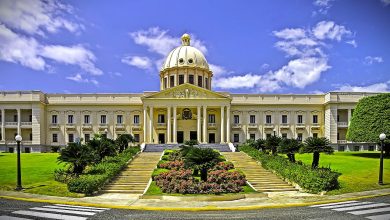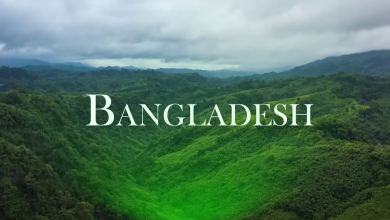Bora Bora History.

Bora Bora, a small South Pacific island, was first settled by Polynesians around the 4th century. It became a French colony in 1888.
Bora Bora, part of French Polynesia, is renowned for its stunning lagoon and vibrant coral reefs. The island, surrounded by a barrier reef, offers crystal-clear waters and pristine beaches. Known as the “Pearl of the Pacific,” it has a rich cultural heritage.
Early Polynesians navigated the seas using stars and ocean currents. During World War II, the United States used Bora Bora as a supply base, which enhanced its infrastructure. Today, Bora Bora is a luxury tourist destination, attracting visitors with its natural beauty and unique history. Its overwater bungalows offer an unforgettable tropical experience.

Credit: bora-bora-insider.com
Early Settlements
Bora Bora, a gem in the South Pacific, has a rich history. The island’s early settlers laid the foundation for its vibrant culture. Let’s explore the beginnings of Bora Bora.
First Inhabitants
The first inhabitants of Bora Bora were Polynesians. They arrived around 900 AD. These early settlers came from Tonga and Samoa. They navigated the vast ocean using stars and nature. The Polynesians brought their unique culture and traditions. They built the first communities on Bora Bora.
Archaeological Findings
Archaeologists have discovered many ancient artifacts on Bora Bora. These findings include tools, pottery, and remnants of old structures. Excavations revealed the daily lives of the early Polynesians. They lived in harmony with nature and the sea. The artifacts show their advanced skills in fishing and farming.
| Artifact | Significance |
|---|---|
| Stone Tools | Used for building and hunting |
| Pottery | Indicates cooking and storage practices |
| Fish Hooks | Shows advanced fishing techniques |
| House Foundations | Evidence of early settlements |
These discoveries provide insight into the island’s history. They help us understand the culture of Bora Bora’s first inhabitants. Each artifact tells a story of survival and adaptation.
European Exploration
The fascinating history of Bora Bora took a significant turn with European exploration. This era introduced new cultures and dramatically changed the island’s trajectory. Let’s delve into key moments of this period.
Captain Cook’s Visit
Captain James Cook first visited Bora Bora in 1777. His journey marked a pivotal moment in the island’s history. Cook’s exploration provided detailed maps and descriptions. These resources were invaluable for future expeditions.
Cook’s crew interacted with the local people. They exchanged goods and shared knowledge. This contact paved the way for more Europeans to visit Bora Bora.
Missionary Influence
Missionaries arrived in Bora Bora in the early 19th century. They aimed to spread Christianity and Western culture. Their influence was profound and lasting.
The missionaries introduced new religious practices. They also brought education and healthcare. These changes significantly impacted the local community.
By the mid-19th century, Bora Bora had many Christian converts. The island’s traditions began to blend with new European customs.
| Year | Event | Impact |
|---|---|---|
| 1777 | Captain Cook’s Visit | Mapped the island, initiated trade |
| Early 1800s | Arrival of Missionaries | Introduced Christianity, education, and healthcare |
These key events during European exploration shaped Bora Bora’s history. They laid the foundation for the island’s future development.
Colonial Era
The colonial era marked a significant change in Bora Bora’s history. European influence started reshaping the island’s culture and society.
French Annexation
In 1842, Bora Bora became a French protectorate. This began with the signing of a treaty between the local chiefs and the French government. France formally annexed Bora Bora in 1888. It became part of French Polynesia. This annexation brought new laws and governance. French became the official language.
World War Ii Impact
During World War II, the United States built a military base on Bora Bora. This base provided a strategic point in the Pacific. The island saw an influx of American soldiers. They built roads, an airstrip, and other infrastructure. This development transformed Bora Bora’s landscape and economy. After the war, the military base was abandoned, but the infrastructure remained. This laid the foundation for future tourism.

Credit: historicalhoney.com
Modern Development
Bora Bora has seen incredible changes over the years. Today, it is a mix of natural beauty and modern amenities. This section explores the modern development of this paradise island.
Tourism Boom
Bora Bora experienced a tourism boom after World War II. The island’s stunning beaches and clear waters attracted many visitors. Resorts and hotels began to spring up, catering to the influx of tourists.
The tourism industry brought new opportunities. Local businesses flourished. Many people found jobs in hospitality and service sectors.
| Year | Number of Tourists |
|---|---|
| 1950 | 1,000 |
| 1970 | 10,000 |
| 1990 | 50,000 |
| 2020 | 200,000 |
Cultural Preservation
Despite the tourism boom, Bora Bora values its cultural preservation. Locals work hard to keep traditions alive. Cultural festivals and events are common.
Schools teach children about their heritage. The community celebrates traditional music, dance, and crafts. Efforts to preserve the environment also play a crucial role.
- Annual Heiva Festival
- Traditional Canoe Races
- Local Craft Markets
- Environmental Conservation Projects

Credit: www.britannica.com
Frequently Asked Questions
What Is The Origin Of Bora Bora?
Bora Bora, originally called Vava’u, was first settled by Polynesians around the 4th century AD.
How Did Bora Bora Get Its Name?
The island’s name comes from the Tahitian word “Pora Pora,” meaning “first born. “
Who Discovered Bora Bora?
European explorer James Cook sighted Bora Bora in 1769 during his first voyage to the Pacific.
What Is Bora Bora’s Historical Significance?
Bora Bora served as a strategic military base for the United States during World War II.
Conclusion
Bora Bora’s history is a tapestry of rich culture and captivating stories. From early Polynesian settlers to its modern-day allure, the island has much to offer. Exploring Bora Bora’s past enhances your appreciation of its beauty. Dive deeper into its history for a more enriching experience.
Visit Bora Bora and witness its timeless charm firsthand.




